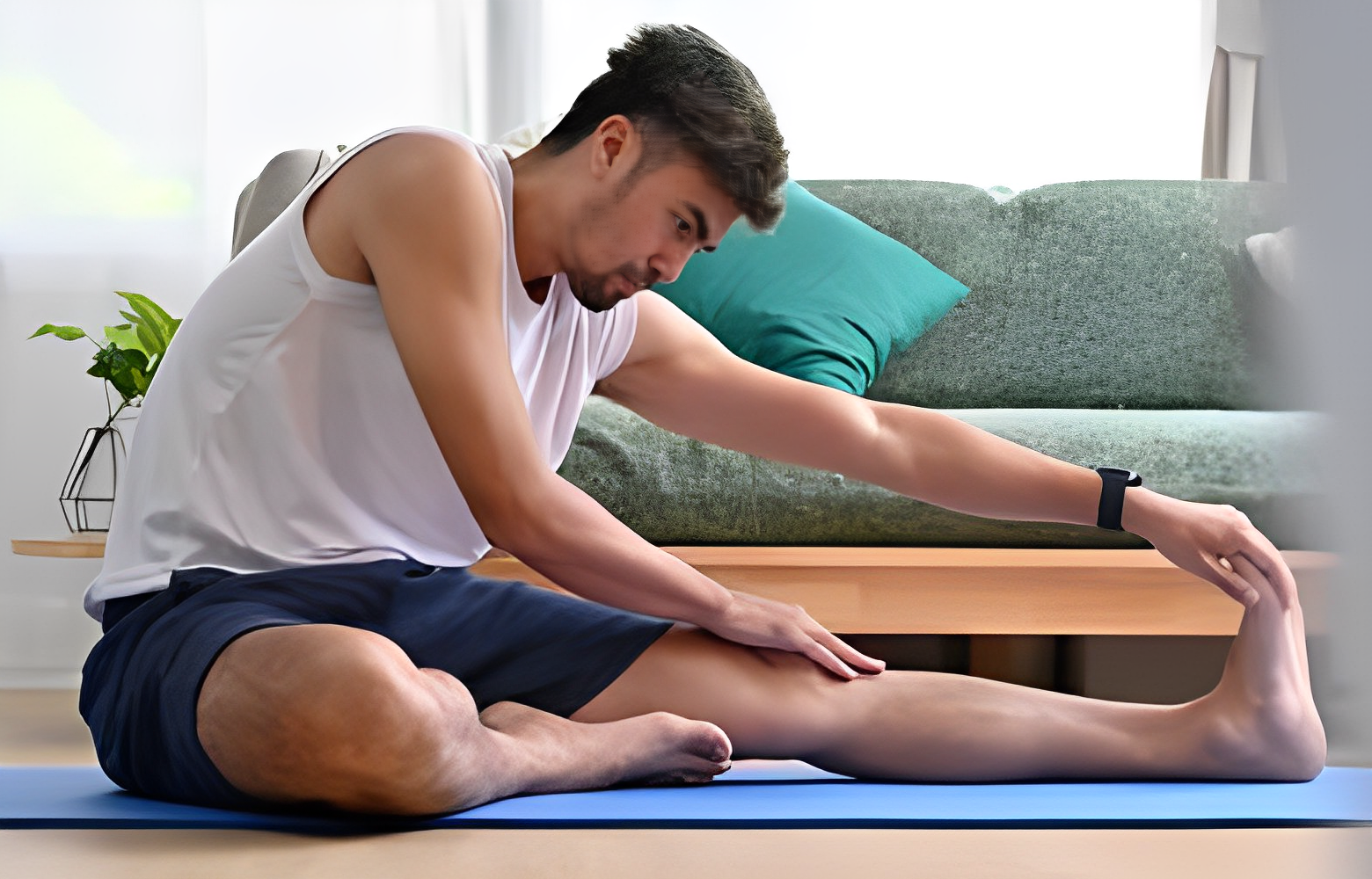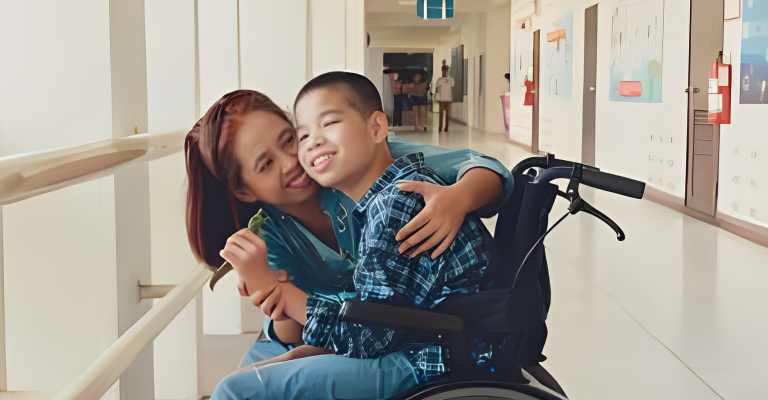Cerebral palsy is a neurological disorder that affects millions of people worldwide, causing physical disabilities that limit essential movements. It affects body posture, muscle tone, and coordination, making simple tasks like walking or reaching difficult.
However, with the help of cerebral palsy stretches, individuals can enhance their mobility and take control of their lives. These easy methods are specifically designed to relieve the symptoms of cerebral palsy and improve muscle function, range of motion, and overall flexibility.
Importance of Stretching in the Treatment of Cerebral Palsy
Cerebral palsy is a condition that affects a large number of people, and surprisingly, over 80% of those affected by it experience involuntary muscle contractions known as spasticity. These contractions are caused when the muscles constantly tighten, continually pulling on the joints and limiting the person’s range of motion.
In young children, who are continuously growing, unmanaged spasticity can cause abnormal posture, stiff movements, and limit muscle growth. However, there is hope for managing spasticity through stretching exercises that alleviate the strain on the joints and improve the range of motion.
Unfortunately, some individuals with more severe forms of cerebral palsy still struggle with spasticity, and stretching exercises may not be enough to relieve their muscle contractions. In such cases, medications like Botox or baclofen may help reduce the spasticity enough to allow the muscles to be stretched effectively.
The goals of stretching exercises for individuals with cerebral palsy are to stabilize muscle tone and maintain or increase the range of motion in their muscles. Furthermore, stretching exercises can also help reduce pain and prevent the need for surgery in some cases.
Stretches for Cerebral Palsy
Cerebral palsy can affect a child’s movement and control, leading to tight and stiff muscles. In order to alleviate these symptoms, a range of stretching strategies may be recommended. These techniques aim to stretch the muscles, increase flexibility, and improve the child’s range of motion.
One effective stretching strategy is passive stretching. This type of stretching involves another person, usually a parent or caregiver, gently stretching the child’s muscles without requiring any effort from the child. This is particularly helpful for very young children or those with severe motor impairments.
Alternatively, active stretching involves the child initiating or maintaining the stretch themselves. This technique is ideal for children with more motor control and can help them gain confidence and independence.
Another method of stretching is prolonged positioning, which involves keeping a muscle in a stretched position for an extended period of time. This type of stretching can be particularly effective for children with severe muscle tightness.
A range of spasticity management interventions can be utilized alongside these stretching strategies. These may include orthoses, surgery, or medication and can help to alleviate spasticity and reduce muscle stiffness in children with cerebral palsy.
In order to do so, here are some stretches that can be easily practiced at home. It is suggested that each stretch is held for about 30 seconds before switching sides. Not only can these stretches help with physical development, but they can also contribute to overall well-being and improve quality of life.
Shoulder Stretch

Shoulder stretches are stretches that target the shoulder and upper arm muscles, which are often affected by cerebral palsy. By performing shoulder stretches regularly, individuals with cerebral palsy can improve their range of motion, reduce stiffness and spasticity, and increase overall mobility.
Several types of shoulder stretches can be used to improve range and mobility in individuals with cerebral palsy. Some popular stretches include the shoulder extension stretch, the shoulder flexion stretch, the shoulder abduction stretch, and the shoulder adduction stretch. Each stretch targets a different area of the shoulder and upper arm muscles, allowing individuals with cerebral palsy to improve their overall range of motion and mobility.
In addition to improving range and mobility, shoulder stretches can also help reduce pain and discomfort associated with cerebral palsy. By stretching the muscles and releasing tension, individuals with cerebral palsy can experience less pain and discomfort in their shoulders and upper arms.
Wrist Stretch
Wrist stretch refers to a range of exercises specifically targeting the wrist, hand, and fingers. Through these exercises, muscles are stretched, and movements are eased. This increased mobility can help reduce pain and improve range of motion.
Research has shown that wrist stretch is particularly effective in improving hand function in those with cerebral palsy. In fact, studies have shown that these exercises can lead to significant improvements in grip strength, skill, and overall hand movement.
It is effective because it helps activate the wrist and hand muscles. These muscles may have been weakened or underused due to cerebral palsy. By stretching and strengthening these muscles, new neural pathways can be developed, and coordination can improve.
Wrist stretch exercises can be done in a variety of ways, including using therapy putty, resistance bands, or simply using the hand to stretch the wrist and fingers. Some examples of wrist stretch exercises include wrist flexion and extension, finger flexion and extension, and wrist rotation.
Hamstring Stretch
It targets the muscles in the back of your legs, which are often tight and inflexible in people with cerebral palsy. By stretching these muscles regularly, you can improve your range and mobility, making it easier to move around and perform everyday tasks.
You only need a flat surface and a cushion or towel to do a hamstring stretch. Lie on your back with your knees bent and feet flat on the ground. Lift one leg up and rest your heel on the cushion or towel. Slowly straighten your leg until you feel a stretch in the back of your thigh. Hold this position for 15 to 30 seconds, then relax and repeat on the other leg.
Yoga poses, such as downward-facing dog and triangle pose, have improved hamstring flexibility in cerebral palsy. These poses help to lengthen the hamstrings and increase the strength and stability necessary for balance and mobility.
Seated Heel Cord Stretch

This stretch can be done in a chair or on the floor. It involves stretching the Achilles tendon, which connects the heel bone to the calf muscle. This can help to improve flexibility and range of motion in the ankles.
To do the Seated Heel Cord Stretch:
- Sit in a chair with your feet flat on the floor.
- Lift one foot off the ground and place it on the opposite knee.
- Slowly push your heel down towards the floor until you feel a stretch in your calf muscle.
- Hold for 15-30 seconds and then release.
- Repeat with the other foot.
This exercise can be done multiple times a day and can help improve mobility and range of motion in children with cerebral palsy. It is a low-impact exercise and can be done without any equipment. It has been shown to improve flexibility and range of motion in the ankle joint.
Heel Cord Wall Stretch
This exercise targets the Achilles tendon, the large tendon at the back of the ankle. The exercise involves standing close to a wall with your toes touching the wall and your heels on the ground, then slowly leaning forward until you feel a stretch in your calf muscles.
The stretch is held for thirty seconds before returning to the starting position. The exercise is then repeated several times.
Heel Cord Wall Stretch is effective for individuals with cerebral palsy because it increases the range of motion in the ankle joint, which can improve walking and balance. The stretch also helps to keep the calf muscles flexible, which can prevent the development of tightness in the muscles.
Tightness in the muscles can lead to further mobility problems. Heel Cord Wall Stretch can also help improve blood flow to the leg muscles, reducing the risk of muscle spasms.
Quadriceps Stretch
The quadriceps are a group of muscles at the front of your thigh that work together to extend your leg. When these muscles get tight, they can limit the range of motion in your hip and knee joints. Individuals with cerebral palsy often experience this tightness.
Quadriceps Stretch is an exercise that focuses on stretching these muscles. It involves lying on your stomach and bringing your heel towards your buttocks. Hold this position for about 30 seconds before releasing. Repeat with the other leg.
Studies show that regular stretching can also reduce muscle stiffness and pain. Not only can Quadriceps Stretch improve range of motion and mobility, but it can also improve muscle strength.
When the quadriceps are stretched, they also undergo a mild contraction, which can help increase muscle strength over time. This can make everyday tasks such as standing, walking, and climbing stairs easier.
If done improperly, stretching can lead to injury. A physical therapist can help you learn how to perform quadriceps stretches properly and determine the best frequency for you.
Bottomline
It’s important to start slowly and gradually increase your stretch time. This will help prevent injury and ensure you get the maximum benefit from the exercise. Over time, you should feel your muscles becoming more flexible and your range and mobility improving.

